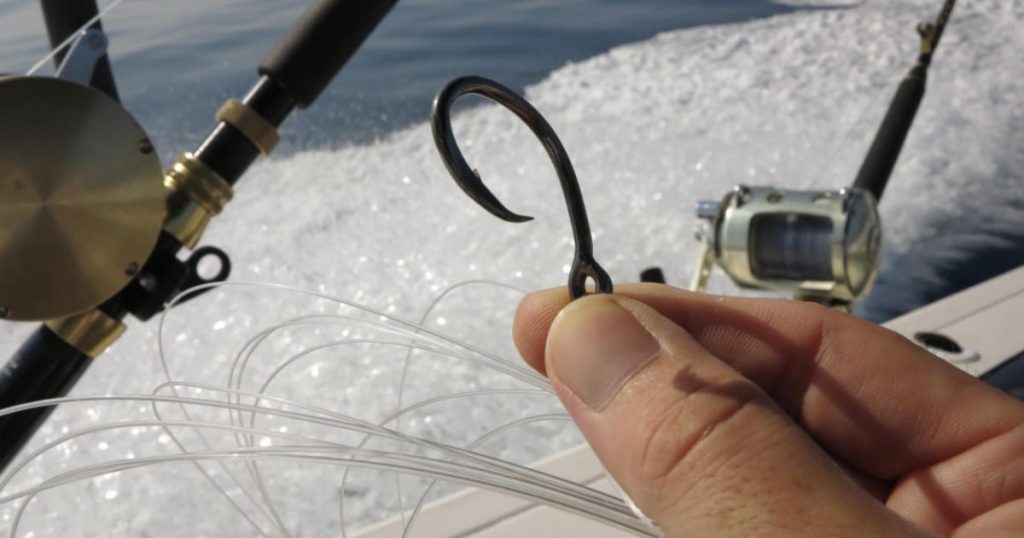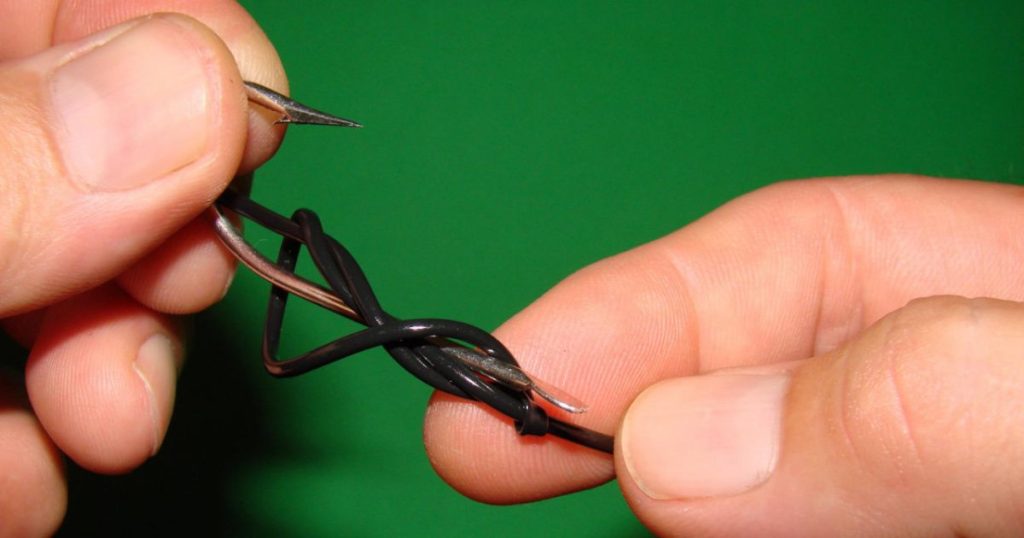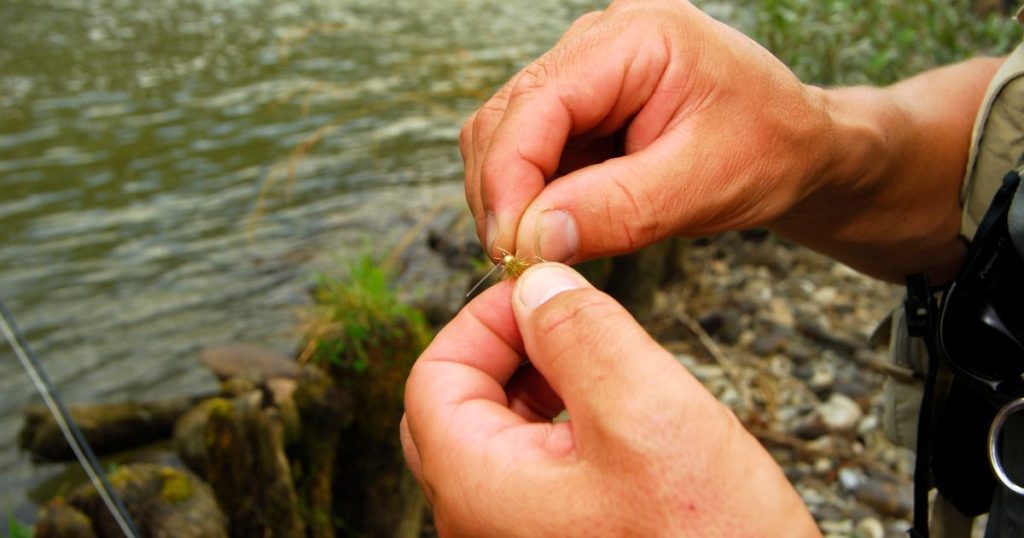It doesn’t matter if you are a first-time adventurer or an avid fisherman: it’s always a good idea to be familiar with varieties of how to tie a fishing hook!
In this article, we’ll give you a clear, step-by-step explanation of how to tie a fishing hook. With this knowledge, you’ll be able to tie fishing hooks with ease and confidence, as well as raise your chances of bringing home a beautiful catch! Let’s jump in!
The Importance of Learning How to Tie a Fishing Hook

Many fishing types require that you know how to tie a fishing knot. The ability to knot fishing hooks is essential for every fisherman. It’s an important part of fishing that can have a significant impact on your likelihood of success on the water.
First, it’s crucial to tie the right fishing knot for the particular type of fishing line and hook you’re using. This will guarantee that when you hook a fish, the hook will remain tightly fixed to the line and not disappear. A loose knot will quickly slip or unravel, leading to lost fish and squandered opportunities.
Additionally, the bait or lure can have an immediate impact on the fish’s reaction. For example, if you want to go ice fishing, you should specifically look for ice fishing lures for lake trout.
Understanding how to tie a fishing hook allows you to adapt to diverse fishing conditions. Varying water depths or fishing techniques, for example, can lead to more productive catches.
The art of tying fishing hooks is a skill every fisherman should have to enhance their success on the water.
How to Tie a Fishing Hook – Exploring Different Techniques and Knots

There are numerous methods for tying fishing hooks. The particular kind of knot you use will be determined by the type of fishing you perform, the size of the hook, and the fishing line you use.
To be ready for anything, let’s go over the most common knots before you reach the water.
Overhand Knot
The overhand knot is frequently known as a foundation knot among experienced fishermen. This indicates that it’s acting as the foundation for other knots. This is one of the easiest knots to tie!
Let’s see how to tie a fishing hook of this type:
- Make a loop and thread the rope’s working end inside it.
- Tighten it.
That’s it! The overhand knot is completed. Set up your other pieces of gear, inspect them, and then begin freshwater fishing. If you reside near the sea, saltwater fishing can be an option.
Improved Clinch Knot
When tying tackle to a monofilament line, the improved clinch knot is a tried-and-true favorite. This “improved” variation of the traditional clinch knot has gained a lot of attention: the standard clinch is largely forgotten among anglers.
The improved clinch knot is a quick and simple knot to tie. Let’s see how we can make it work:
- First, put the line’s end through the hook’s eye. Make five or more double-backs while circling the standing line.
- Bring the line’s end back through the small loop that was produced behind the eye before going through the larger loop.
- To fasten the coils, wet the knot and pull on the tag end. Slide closely up against the eye, then clip the tag end shut.
Uni Knot
This type of knot, sometimes referred to as the Duncan Loop Knot, is a solid and reliable knot for connecting monofilament to terminal gear. It’s similarly reliable and, in the opinion of some fishermen, simpler to tie than the improved clinch. The primary factor, however, is your needs.
Here’s how to tie a fishing hook of this type:
- First, run the line into the hook eye. After, reverse your direction parallel to the standing line and place the tag end above the doubled line to form a loop.
- Turn the tag end six times around the double line and through the loop.
- Pull the tag end and wet lines to tighten turns. In this way, you’ll create a strong knot.
Rapala Knot
The Rapala Knot is among the most popular types of fishing knots. It’s a type of knot that creates a non-slip loop at a line’s end.
The process for tying it is simple. Let’s see how to tie a fishing hook of this type:
- First, make a loose overhand knot. Then, pass the tag end through the eye and back through the knot.
- Make 3 turns around the standing line. Then, bring the tag end through the overhand knot.
- Pass the tag’s end through the resulting loop.
- To tie the knot, pull on the standing line while retaining the tag end.
- To tighten the knot, pull firmly on the tag end and the standing line.
The Knotless Knot
The knotless knot is a common carp fishing knot. It’s a popular fishing knot that is primarily used by people who want to snell a hook quickly and easily.
Let’s see how to tie a fishing hook of this type:
- First, make a loop at the end of the line to keep the bait in place.
- Thread the opposite end of the line into the eye of the hook and fix the loop to the appropriate place.
- Make 5 to 8 wraps around the shank of the hook.
- After the last wrap, pass the free end through the eye of the fish hook.
- Pull the free end tight and move the wraps up to the eye of the hook.
- Adding a drop of super glue to the knot is another option.
Blood Knot
The blood knot’s origins can be traced to the age of sail, when an adaptation of it was used to draw blood by fastening it to the ends of whips. It was, and still is, one of the strongest knots.
The blood knot is a well-known fishing knot that’s mainly popular among fly fishermen. Let’s see how to tie a fishing hook of this type:
- First, overlap the ends of the lines that will be linked. Then, wrap one around the other 5 times and reattach the tag end between the two lines.
- Proceed with the other end, twisting it the same amount of times in the other way.
- Pull lines slowly in opposite directions. Clip the ends that are near the knot.
Palomar Knot
The Palomar Knot can be one of the greatest choices for fishermen who enjoy ice fishing. It is one of the strongest ice fishing knots available since it is tied using a double line.
Let’s see how to tie a fishing hook using this type of knot:
- Double a 6-inch length of line, then insert the loop’s end into the eye of the hook.
- With the bottom hook protruding, tie a loose overhand knot.
- Pass the loop of line over the hook. Hold the overhand knot in place and slide the loop over the hook’s eye.
- Tighten the knot down onto the eye and clip the tag end close.
How to Tie a Fishing Hook – Final Thoughts
Knowing how to tie a fishing hook is an essential skill for any novice or experienced angler.
However, remember to begin by choosing the appropriate hook for your intended fish, and then appropriately tie the knot. Popular fishing hook knots include the improved clinch knot, Palomar Knot, and blood knot.
Whichever fish hook knot you choose, always verify the knot’s strength before casting, and practice tying it until you feel comfortable with it! We wish you a good haul!
Visit The Coastal Side for additional useful and entertaining information about fishing, surfing, boarding, diving, and other popular sports.




